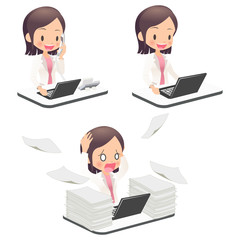Most business professionals have grown up thinking and believing “The customer is always right.” In  his groundbreaking book, “Customer Centricity: Focus on the Right Customers for Strategic Advantage” Wharton School Professor Peter Fader presents methods and approaches for companies to focus on the right customer and deliver a value proposition that exceeds their expectations. True Customer Intimacy means that you understand your customer’s business as well as if, or not better than they understand it themselves, and you provide them with products and services that help them execute their strategies and achieve their business goals and results.
his groundbreaking book, “Customer Centricity: Focus on the Right Customers for Strategic Advantage” Wharton School Professor Peter Fader presents methods and approaches for companies to focus on the right customer and deliver a value proposition that exceeds their expectations. True Customer Intimacy means that you understand your customer’s business as well as if, or not better than they understand it themselves, and you provide them with products and services that help them execute their strategies and achieve their business goals and results.
Along with Customer Intimacy comes something I call a “Customer-Responsive Culture”. A Customer Responsive Culture is defined as an organizational culture that is focused on responding to the needs of customers the moment they need it. In our 24/7 digital world of instant messaging, emails, and texting, we have established a precedent of instant responsiveness that has transcended into the realm of the customer experience.
Contrast and compare the evolution of this “instant age” with the process of living in an organization where people are trying to get work done. With increasing technology and digital tools also comes increased workloads and expectations for what work is. But what happens when these worlds collide? What happens when you have a customer-responsive culture (to inside customers and outside customers) and the activities related to being responsive get in the way of being productive?
For example, image for a moment a senior leader sitting at her desk working on one of her three big projects. Suddenly, standing in front of her is a colleague asking her questions about a billing issue. A moment later, another colleague asks her if she can meet for 5 minutes about a different project. And then, a few minutes later, an email comes in from one of the customers she’s working with asking if she could jump on a quick call to review the deliverables for next week. What to do? Conflicting priorities and significant constraints on time and resources. The Customer-Responsive Culture tells the manager to drop everything she’s doing and respond which is great until the end of the day when she realizes she her work didn’t get done and now she is going to have to spend all evening at home getting caught up on the things she didn’t so during the day.
 I know from the many Business Leadership programs I teach that this is a very common occurrence for many managers but especially ones trying to be responsive to external and internal customers. The answer to the question I ask in the title of this blog is yes, a Customer-Responsive Culture can be too strong without a few key tools to help balance it out and enable leaders to prioritize the work and productivity.
I know from the many Business Leadership programs I teach that this is a very common occurrence for many managers but especially ones trying to be responsive to external and internal customers. The answer to the question I ask in the title of this blog is yes, a Customer-Responsive Culture can be too strong without a few key tools to help balance it out and enable leaders to prioritize the work and productivity.
Based on research and observations, here are three things a Manager can do to find balance in a Customer-Responsive Culture.
Always Respond, but Manage Expectations
When customers reach out they usually don’t want immediate action and results. The Customer-Responsive Culture mentality just assumes they want immediacy. Many times, customers are also looking to be heard and acknowledged. Which is my first tip; always respond but manage expectations. It is perfectly acceptable to let customers know that you have received their request and will get back to them as soon as you can. It’s up to you to find that right balance and determine the appropriate time when you can respond. The key is not to ignore of push aside; use open communications and transparency to communicate and manage the expectations.
Prioritize! By key Customer!
Yes, some customers are more important than others. Establish criteria; it could be revenue, profit, potential, thought leadership, brand, or any metric important to your business and strategy. Not every customer is created equal and it’s important to recognize the “mean bullying customers” who try to scare you and intimidate you don’t get preferential treatment.
Adapt and be Versatile
After a while of doing this, you will feel liberated and more productive. However, be careful, it won’t last forever. Priorities change, customers change, contacts change, and business conditions change. You must be able to look out at the ecosystem and adept to the changes and be versatile enough to re-calibrate your approach.




